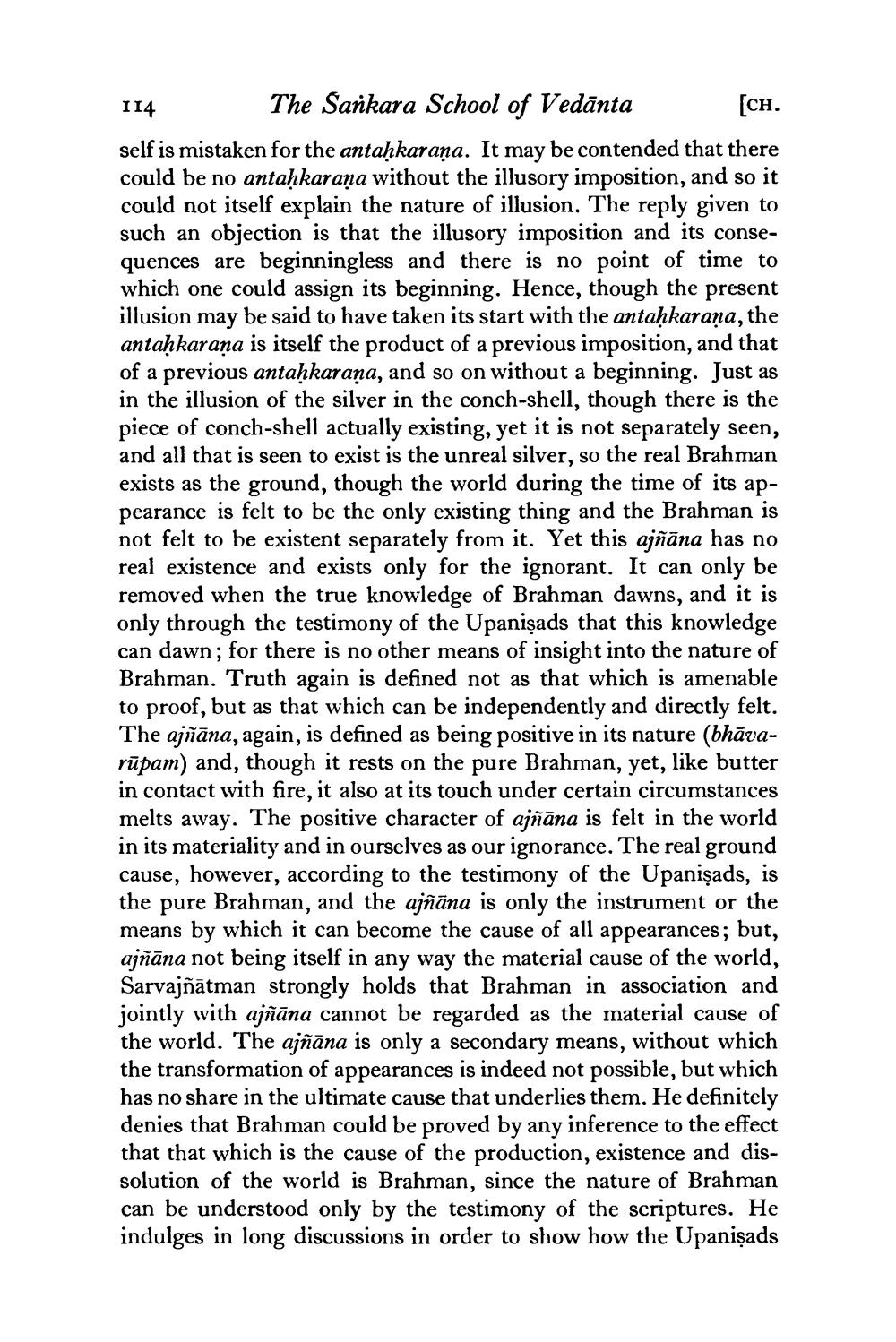________________
114
The Sankara School of Vedānta [CH. self is mistaken for the antaḥkaraña. It may be contended that there could be no antaḥkaraṇa without the illusory imposition, and so it could not itself explain the nature of illusion. The reply given to such an objection is that the illusory imposition and its consequences are beginningless and there is no point of time to which one could assign its beginning. Hence, though the present illusion may be said to have taken its start with the antahkarana, the antahkaraña is itself the product of a previous imposition, and that of a previous antaḥkaraṇa, and so on without a beginning. Just as in the illusion of the silver in the conch-shell, though there is the piece of conch-shell actually existing, yet it is not separately seen, and all that is seen to exist is the unreal silver, so the real Brahman exists as the ground, though the world during the time of its appearance is felt to be the only existing thing and the Brahman is not felt to be existent separately from it. Yet this ajñāna has no real existence and exists only for the ignorant. It can only be removed when the true knowledge of Brahman dawns, and it is only through the testimony of the Upanişads that this knowledge can dawn; for there is no other means of insight into the nature of Brahman. Truth again is defined not as that which is amenable to proof, but as that which can be independently and directly felt. The ajñāna, again, is defined as being positive in its nature (bhāvarūpam) and, though it rests on the pure Brahman, yet, like butter in contact with fire, it also at its touch under certain circumstances melts away. The positive character of ajñāna is felt in the world in its materiality and in ourselves as our ignorance. The real ground cause, however, according to the testimony of the Upanişads, is the pure Brahman, and the ajñāna is only the instrument or the means by which it can become the cause of all appearances; but, ajñāna not being itself in any way the material cause of the world, Sarvajñātman strongly holds that Brahman in association and jointly with ajñāna cannot be regarded as the material cause of the world. The ajñāna is only a secondary means, without which the transformation of appearances is indeed not possible, but which has no share in the ultimate cause that underlies them. He definitely denies that Brahman could be proved by any inference to the effect that that which is the cause of the production, existence and dissolution of the world is Brahman, since the nature of Brahman can be understood only by the testimony of the scriptures. He indulges in long discussions in order to show how the Upanişads




